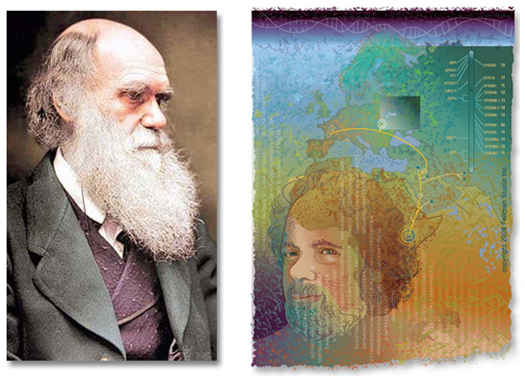 In the days before the internet hit and technology like interactive programming, courses, kiosks and encyclopedias were delivered on CD-ROM or LaserDiscs, I was involved in the (now defunct) International Interactive Communications Society (IICS) and got to know a local artist by the name of Lynn Fellman.
In the days before the internet hit and technology like interactive programming, courses, kiosks and encyclopedias were delivered on CD-ROM or LaserDiscs, I was involved in the (now defunct) International Interactive Communications Society (IICS) and got to know a local artist by the name of Lynn Fellman.
With an artist’s eye and a geek-like fascination with science and technology, Lynn leapt into the IICS and applied her animation expertise and creative mind, along with her illustrating skills, in order to apply them to interactive media projects. In those early interactive days, most startups and developers didn’t think much about user interfaces, visual appeal, or that great design could (and usually did) take their work up to a “gasp creating and eyes widening” level.
A few weeks back, Lynn pulled together an “IICS Alumni” lunch, I toured her studio, and she gave me an overview and update on one, key aspect of her art and passion: taking DNA sequencing and illustrating it for people who’ve had theirs sequenced, and I’m certain she could tell that I was deeply impressed and delighted with her art.
With projects like 23andMe, a DNA sequencing lab co-founded by none other than Google co-founder Sergey Brin’s wife, Anne Wojcicki, having your life patterns analyzed can give you all sorts of data about your ancestry and is a field accelerating due to the benefits being discovered when we have more knowledge about our own DNA. With her curious mind and scientific interest, Lynn saw a need that she could fill and is bringing this raw DNA data to life in her art and creating portraits for people around the world.
What’s that got to do with Darwin and why should you care?
Lynn sent me a notice about something happening at The Bell Museum of Natural History on the UofMN campus: a Darwin Day Birthday Party that looks very fun. As I read through it, I was wondering why she’d sent it to me and then saw that this party coincides with the kickoff of Lynn’s exhibit of her DNA Portraits.
After she sent me that email, I went to the Bell site and was stunned to see how it has exploded onto the scene with an obviously revitalized museum that goes far beyond the “Let’s take our Scout troop there to see dead, stuffed animals” sort of place that I remember. Instead, the Bell team appears to have turned it into a destination worthy of our attendance and great for our kids (though their $24M funding request, part of the U of MN budget, was line-item vetoed by Governor Pawlenty, so we’ll see what happens to this destination over time).
Here are the details on the party and Lynn’s kickoff:
Darwin Day Party
Thursday, February 12, 2009, 7 to 9 p.m.
Bell Museum Auditorium
$10/ free to museum members and University students
The speakers will present in the auditorium from 7 to 8 pm. Birthday cake and refreshments are served after the presentations.
Celebrate the 200th anniversary of Charles Darwin’s birthday! Part of a world wide celebration, the Twin Cities’ version is at this Thursday night. Join in the fun with cake, drinks and presentations by U of M scientists and educators. They will present funny, outrageous and controversial rapid-fire, media-rich presentations about Darwin and evolution. From the big bang to the human genome, hear the newest research and controversy on evolution and Darwin. The presenters are:
You can also connect to these events on Facebook.
Also Opening on February 12th: Lynn Fellman’s DNA Portraits: The expanding field of genographics uses genetic markers to trace the patterns of human migration from our common origin in Africa. Recent advances in genetic research has spurred Minneapolis artist Lynn Fellman’s imagination – she’s taken the science to an art form by combining maps, DNA sequence data, and colorful graphics to create stylized portraits as a way to visualize one’s deep ancestry. This exhibit features a sampling of her portraits, as well as a series of panels and banners that explain the science behind her art.
Also Opening on February 12th: Frans Lanting Photographs: The University of Minnesota Bell Museum of Natural History is proud to host the North American premiere of this internationally acclaimed exhibit. LIFE: A Journey Through Time, interprets the evolution of life on Earth through photographer Frans Lanting. Lanting’s lyrical photos trace Earth’s history from the beginnings of primordial life to the ascent of mammals through otherworldly landscapes and breathtakingly intimate portraits of animals and plants engaged in million-year-old rituals. Many of the exhibit’s 62 photographs are matched with real animal, fossil, and plant specimens from the Bell Museum’s collection. Born in the Netherlands, Lanting serves on the National Council of the World Wildlife Fund and is a columnist for Outdoor Photographer and has received the BBC Wildlife Magazine’s Wildlife Photographer of the Year Award and the Sierra Club’s Ansel Adams Award for Conservation Photography.